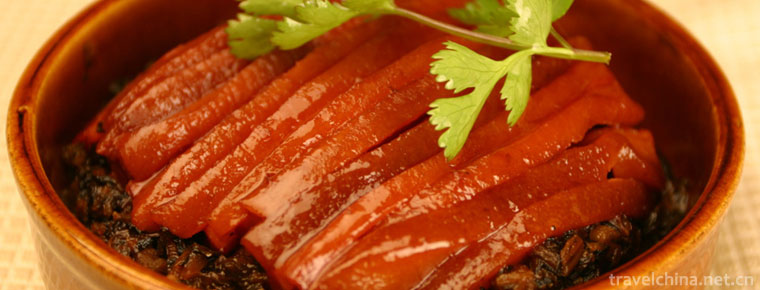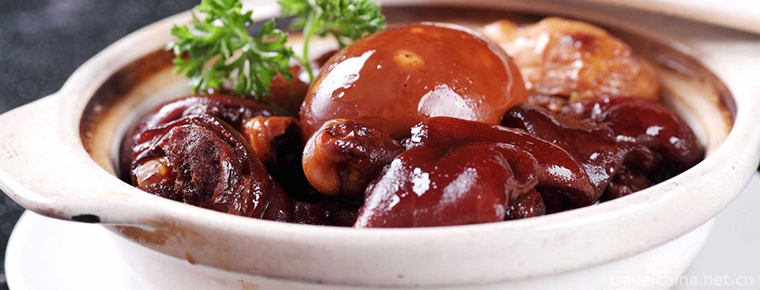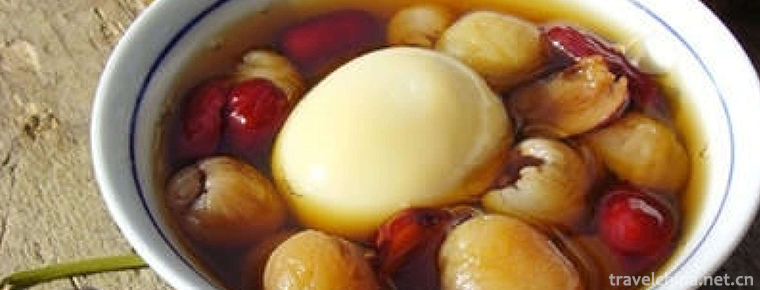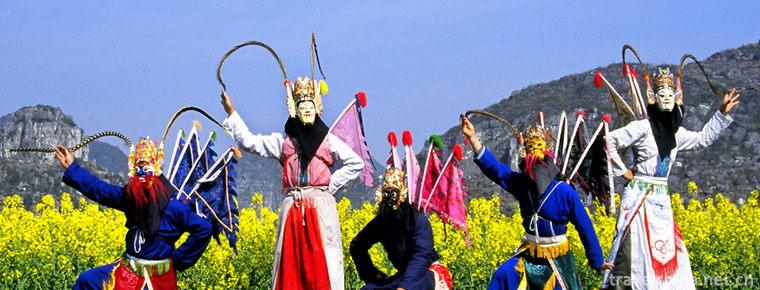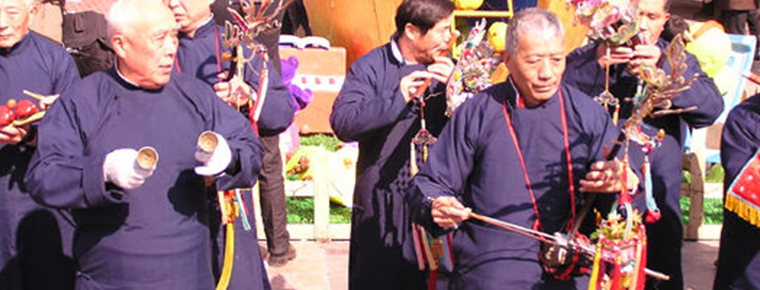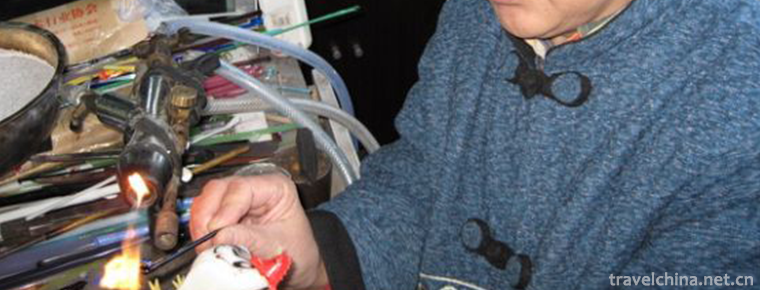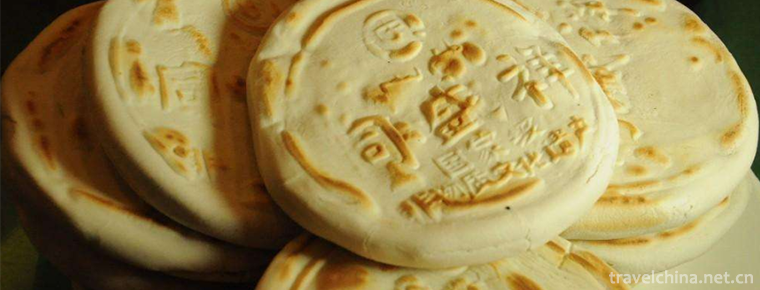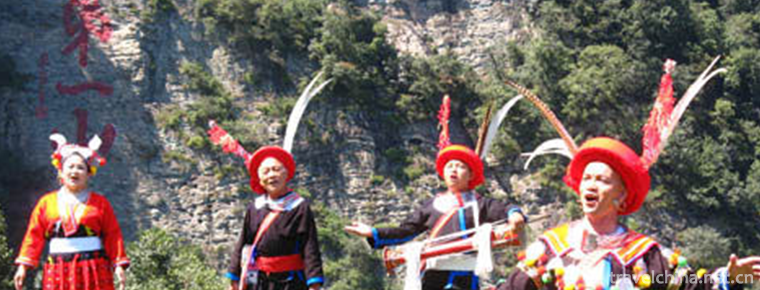Li Folk Songs
Li Folk Songs
Folk songs play an important role in daily life. Almost all men, women and children can sing. Especially on festive days, singing is an indispensable recreational activity. In the daily production work, they also sing impromptuly. The content of folk songs is mostly love songs, such as "Anti-Marriage Song" is a long narrative song. There are labor songs, wedding songs, grand ceremonies, ghost songs and so on. Li folk songs can be divided into traditional old folk songs sung in Li language and folk songs sung in Hainan dialect, which are influenced by Han culture. Li Ge has a set of beautiful tunes, similar to singing tunes, such as "Luoli Tune" in Qiongzhong and Baoting Counties, and "Shui Man Tune" in Qiongzhong County.
In 2008, Li folk songs were approved by the State Council to be included in the second batch of national intangible cultural heritage list.
historical origin
The Li people live in Tongshi Town, Baoting, Ledong, Dongfang, Qiongzhong, Baisha, Lingshui, Changjiang and Guanxian on Hainan Island. They are a branch of the ancient Baiyue people. The Li people have their own language. The Li language belongs to the Li branch of the Zhuang and Dong languages of the Sino-Tibetan language family. Because of long-term contact with the Han people, many Li people can speak Chinese at the same time. In the past, the Li people did not have their own written language and used Chinese characters. In 1957, they created the Latin-based Li language.
artistic characteristics
Characteristics of Li Folk Songs
Li folk songs are a gorgeous flower of art. People of Li nationality love to sing. Li folk songs can be divided into folk songs and folk songs. Folk ballads are sung in Li language and rhyme, mostly in traditional classical Li songs, usually with five syllables and one sentence, but there is no fixed number of sentences in each song. Generally, four sentences are used as one song in minors.
Li folk songs are mostly solo and duet. They are accompanied by Li's unique folk music. They are often combined with music and dance. They are composed of songs and songs. They have distinct national characteristics and strong ancient customs. They are rhythmic and easy to be praised by mouth. Li folk song is sung in Hainan dialect and Li rhyme. It is a new Li song derived from the development of Li society and the exchange and integration of other national cultures. Generally, there are seven sentences, one sentence and four sentences, which are called "four sentences songzi". The longer narrative poems are four sentences and one section. They are continued in many sections. In addition to solo and duet singing, there are Qi Zeng, rotation, chorus and accompaniment of musical instruments. Li's ballads are rich in imagination, appropriate in metaphor, rigorous in structure, far-reaching in artistic conception and lively in use of Fu, Bi and Xing. Love songs, which are exquisite treasures in Li folk songs, are in large numbers. The Li people sing ballads, mainly on festive days, such as building new houses, holding weddings, Festival theatres, visiting relatives and friends and other occasions, usually men and women sing in pairs, often to the dawn. Especially in the traditional festival of "March 3rd" every year, young men and women gather in the hillside, with songs as the medium, to exchange feelings, pour out love and find couples. Usually in the production of labor, but also because of interest to sing a song, direct expression of feelings. In some family celebrations, respected elders often impromptuly sing all-inclusive "classical" Li Songs, which are sung all night long.
During the period of revolutionary war, Li folk songs developed again. It replaces the backward and passive parts of the original songs with the revolutionary content and high-spirited style, and becomes a weapon to educate the people to fight against the enemy. For example, Five Rivers on Wuzhishan expresses the strong revolutionary belief of the Li people with firm and optimistic mood and joyful lyrics. After listening, it makes people feel energetic and ambitious. Li singers emerge in an endless stream and emerge in batches. The most famous singers are those who conform to their virtues.
Li nationality musical instruments
The instruments of Li nationality are mainly folk ones. These instruments can be solo or accompanied. Among them, "Wow" (that is, "bamboo flute") is made of bamboo tubes of different lengths, 2 feet, 1 foot and a half, and 6 inches and 7 inches. The end of the blow is corked, leaving only one fifth of the air vent. The pore is partially like a crescent moon. There are six small holes on the front of the tube. When playing, the left and right hands press three phoneme holes respectively. As the fingers open or close, they can play eight intervals, such as 1234567i. It's loud and loud.
"Dongxiao" is made of rattan and bamboo poles. It is 1 inch thick and 4 feet long. There is a blow hole at the edge of the pipe head. The opposite side of the pipe pole is 1.5 feet away from the pipe head. The front side of the pipe pole is 1.5 feet away from the pipe head. There are three sound holes downward. It can be divided into vertical blowing and bamboo tube blowing. For vertical blowing, the tube head is covered with dew-pocket leaves to control the size and strength of blowholes; for small bamboo tubes, the blowholes are inserted with a 4-5 inch long bamboo tube with the thickness of a pen tube and wrapped with dew-pocket leaves. When playing, the left thumb holds the opposite phoneme hole, the middle finger holds the front first phoneme hole, and the right index finger and the middle finger holds the second and third phoneme respectively. From these four phoneme holes, 7 intervals, such as 1234567, are blown out. The tone is broad, melodious and full of life sentiment.
Lizu ballads, with their rich lyrics and various melodies, are both graceful and passionate. They reflect the simple, optimistic, honest and forthright character of the people of the Li nationality.

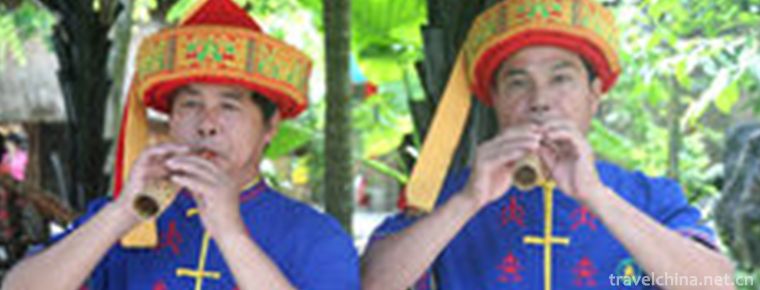
-
Jiang Cudan Canton style pig leg
Except for those with internal fever, dry stool and weak spleen and stomach function, breast enlargement products can be used as a warm-up tonic in winter..
Views: 234 Time 2018-11-02 -
Wulong Karst Tourist Area Movie Transformers Place
Wulong Karst Tourist Area is located in Wulong District of Chongqing City. It has rare natural karst landscape, including karst caves, Tiankeng, ground crevices, canyons, peaks, alpine grasslands, etc.
Views: 223 Time 2018-12-12 -
Fried egg with Longan
Oyster with longan is a dish name. Its raw materials have certain medicinal effects of traditional Chinese medicine and have medicinal effects on human body..
Views: 260 Time 2019-03-24 -
Anshun land Opera
Anshun Dixi Opera, a local traditional drama in Anshun City, Guizhou Province, is one of the national intangible cultural heritage..
Views: 207 Time 2019-04-01 -
Jiangnan bamboo
Chinese traditional instrumental music, silk and bamboo, is popular in southern Jiangsu and Zhejiang. After the Revolution of 1911, great progress was made in Shanghai.
Views: 113 Time 2019-05-05 -
Material liao qi
Material wares are traditional handicraft products in Beijing. It is a traditional handicraft made of glass strips. There was no direct glass-making industry in Beijing. The materials used were collec.
Views: 117 Time 2019-05-13 -
Legend of the ancestors of Khitan
The legend of the ancestors of Qidan is a folk legend that is spread in Pingquan County, Hebei Province, China. According to legend, the ancestors of Qidan were born on the Futu River in Mayushan.
Views: 111 Time 2019-06-10 -
Production Techniques of Tongshengxiang Beef and Mutton Bubble
Tongshengxiang steamed beef and mutton steamed bun was founded in 1920. It was named Tongshengxiang with the meaning of "prosperity and auspiciousness". Its steamed bread is made of meat of .
Views: 182 Time 2019-06-21 -
Yao Folk Songs
Yao folk song is a popular Yao folk song in Ruyuan Yao Autonomous County of Shaoguan City. Yao language is called "Saihua handle". It is translated into Chinese to mean "the language th.
Views: 125 Time 2019-07-11 -
Longmenshan earthquake site park
This entry is lack of information column, supplement the relevant content to make the entry more complete, but also can quickly upgrade, come on! The site earthquake park includes the widely spread ruins of Xiaoyudong bridge.
Views: 179 Time 2020-11-05
